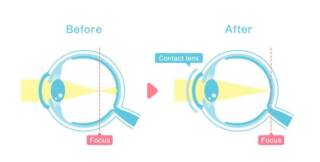Key Takeaways
- Setting a competitive price is a crucial first step that attracts more serious buyers and sets the tone for negotiations.
- Enhancing curb appeal creates a lasting first impression and makes your property instantly more attractive.
- Decluttering and staging the home allows buyers to envision themselves living in the space, improving your odds of a sale.
- Investing in professional photography can make your home stand out online, drawing in more interested buyers.
- Being flexible with showings widens your pool of potential buyers and increases your chances of receiving strong offers.
- Understanding and negotiating contingencies ensures smoother deals and helps mitigate unwelcome surprises or last-minute fall-throughs.
Introduction
Selling your home represents a major milestone, both financially and emotionally. For many, it marks the end of one chapter and the beginning of another, often accompanied by a mix of anticipation and anxiety. The process of listing, negotiating, and closing on a house can feel intimidating, especially if you are unfamiliar with the many steps involved in sell house. However, with foresight and the right strategies, you can turn what might seem like an overwhelming transition into a manageable—and even rewarding—journey. Whether you plan to sell yourself or seek assistance, leveraging professional resources can significantly simplify the process. The following insights and actionable tips are designed to help you achieve a smoother, more successful home sale with minimal stress and maximum return.
Set a Competitive Price
The foundation for a successful home sale starts with getting the price right. If your listing price is set too high, your home could linger on the market, gradually developing a stigma as buyers assume something is wrong with the property. Conversely, pricing too low might result in a quick sale, but at the expense of your hard-earned equity. To determine the ideal asking price, start your research by examining recent sales of homes in your area that closely match yours in terms of size, style, and condition. Online real estate platforms, public records, and neighborhood comparisons are excellent initial tools for researching properties. However, a qualified real estate agent brings critical local expertise, identifying subtleties in market trends that may be overlooked in online estimates. Having a professional conduct a comparative market analysis (CMA) helps ensure your price is both attractive to buyers and fair to you. Remember, homes priced competitively generate more interest, which can lead to multiple offers, stronger bargaining positions, and a speedier sale.
Enhance Curb Appeal
First impressions can make or break a home sale, and the exterior appearance of your house sets the stage for what buyers expect inside. Before showings or photoshoots, take some time to refresh your home’s exterior appearance. This doesn’t necessarily require major renovations—a few targeted improvements can yield remarkable results. Begin with basic landscaping by mowing, edging, and fertilizing the lawn, trimming hedges, and planting vibrant seasonal flowers for a welcoming pop of color. Address minor maintenance issues, such as chipped paint, a worn mailbox, or cracked walkways, as they signal to buyers that the house is well-maintained. Cleaning windows, power washing the driveway, and updating your front door with new hardware or a bold color are all cost-effective ways to enhance your home’s curb appeal. Even subtle details—such as a well-placed welcome mat or attractive outdoor lighting—can have a significant impact, giving buyers confidence before they even step inside.
Declutter and Stage Your Home
Once buyers enter your home, the goal is to help them visualize their own lives unfolding within its walls. A cluttered or overly personalized space can hinder this, making rooms feel smaller and distracting buyers from key features. Start the staging process by systematically removing personal photos, collections, and bulky or excess furniture. Clear countertops, closets, and surfaces to create a sense of space and cleanliness. Neutral, universally appealing decor—like subtle wall colors, simple artwork, and fresh linens—allows buyers to mentally move in. Staging doesn’t have to be expensive; even minor adjustments, such as rearranging furniture to better define spaces or highlighting architectural features, can have a meaningful impact. If your budget allows, consider hiring a local staging company to refine your home’s appearance and maximize its selling potential. Ultimately, a well-staged home invites buyers to linger, emotionally connect, and make stronger offers.
Invest in Professional Photography
In today’s digital-driven market, your home’s online photos are often the very first—sometimes only—chance to attract a buyer’s attention. Professional photographers are skilled in using lighting, composition, and post-editing techniques to showcase your property at its best. High-quality, high-resolution listing photos showcase your home’s best features, including spacious living areas, upgraded kitchens, newly landscaped backyards, and energy-efficient enhancements. Incorporate images that capture both broad overviews and unique details, like built-in shelves, outdoor patios, or updated appliances. If a professional isn’t available, you can still make an impact by using a quality camera, shooting at the brightest time of day, and ensuring every space is spotless and well-arranged. Since so many buyers begin their search online, investing in photographs that shine is likely to draw more showings and maximize your opportunities.
Be Flexible with Showings
Convenience is a determining factor for many buyers, and restricting viewing times can inadvertently lengthen your home’s time on the market. The more accommodating you are with showings—including weekdays, evenings, weekends, and even last-minute requests—the broader your pool of potential buyers will be. Consider arranging for virtual tours or video walkthroughs, particularly if you live in an area where buyers may be relocating from out of town. Prepare your home each day by keeping it clean, organized, and free from unpleasant odors. Store away valuables and sensitive documents, and, if possible, have a plan to vacate during showings so buyers feel comfortable exploring at their own pace. Ultimately, the easier it is for buyers to see your home, the more likely you are to receive competitive offers, putting you in a prime position to negotiate favorable terms.
Understand and Negotiate Contingencies
Real estate transactions often include contingencies, or conditions that must be met for the sale to proceed. Common contingencies include home inspections, appraisals, and financing approvals. Being knowledgeable about these elements allows you to proactively address potential sticking points. For instance, by pre-inspecting your property and remedying known issues before listing, you can reduce the risk of tough negotiations or lost sales during the buyer’s inspection phase. Evaluate each offer with an eye toward which contingencies are reasonable and which could lead to unnecessary complications or delays. Collaborating with a trusted agent or real estate attorney ensures you fully understand the implications of each contingency, skillfully negotiate terms, and safeguard your interests. For a deeper insight into handling this critical aspect of selling, review NerdWallet’s guide on contingencies in real estate.
By approaching the process methodically, focusing on details, and leveraging helpful resources, homeowners can confidently navigate their next move. Taking the time to price, prepare, and market your property wisely greatly increases your chances of a smooth transaction, minimized stress, and a rewarding outcome in one of life’s most significant undertakings.






